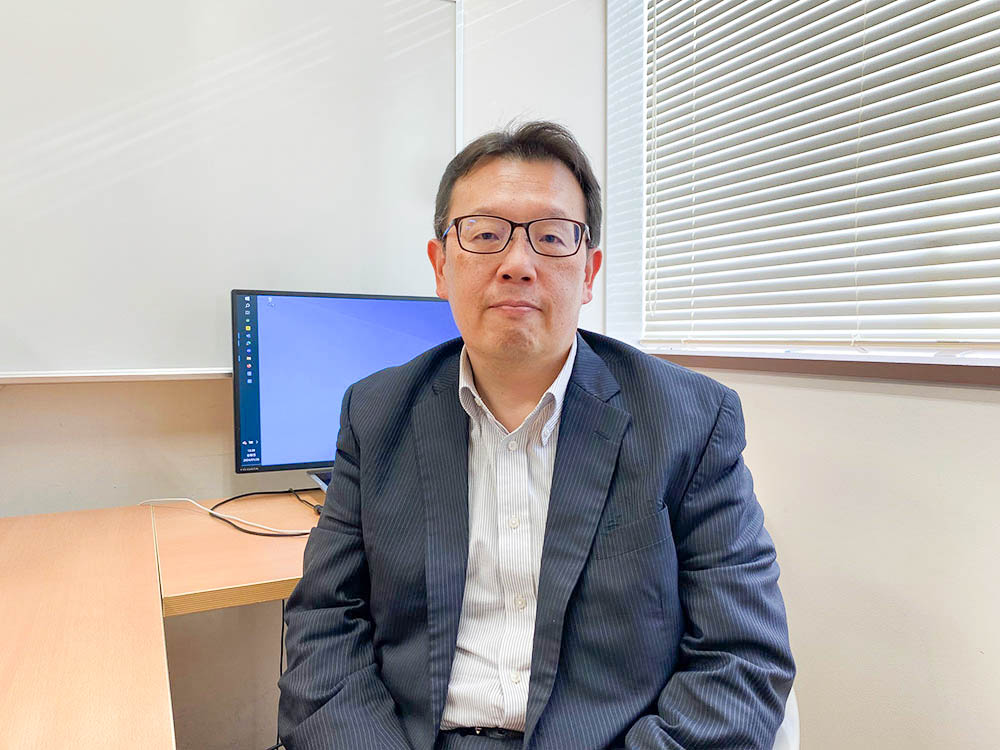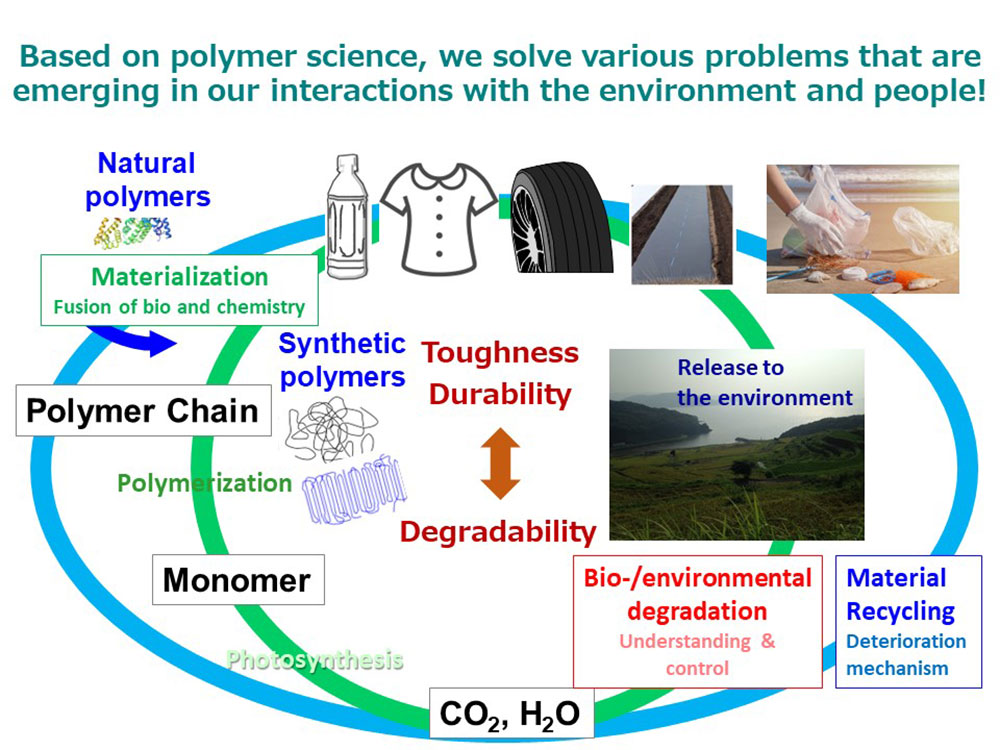Research


Home > Research > MATSUNO laboratory
Research fields/Keywords:polymer structure and physical properties, polymer surface and interface, eco-friendly materials, biocompatible materials, material recycling
 Professor Hisao MATSUNO
Professor Hisao MATSUNO
Long before the concept was established, humans ingested polymers as food and used them in clothing. Proteins and polysaccharides, known as biomacromolecules or natural polymers, are representative examples. Meanwhile, in the 20th century, along with the development of petrochemistry, synthetic polymers such as fibers, resins, and rubber began to be produced industrially. Although the concept of polymers was established just over 100 years ago, they have become indispensable materials that enrich our daily lives.
Demand for polymers has been rapidly expanding, but in recent years serious problems have emerged in the environment and in situations where they encounter people. To maintain and improve quality of life (QOL) and prosper, it is believed that the key is to put polymer materials in an appropriate circulation cycle during and after use.
In our laboratory, we conduct experimental research that will lead to the creation of high-performance and highly functional solid materials and surface materials by making full use of the knowledge of the structure and physical properties of polymers as well as surface science (Science and Technologies). One of the goals is for all members of the laboratory to be able to draw molecular pictures keeping in mind the hierarchical aggregation structure and thermal molecular motion unique to polymers, and to be able to explain the behaviors of polymer materials. We are engaged in research every day to develop polymers into materials that are highly beneficial to the environment and people.




The main research themes are as follows.
We aim to elucidate the degradation mechanism of polyesters and polyamides into their oligomers/monomers in an aqueous environment. They have toughness and durability but also have contradictory degradability, ultimately, we build a mechanism for on-demand degradation in the environment.
We aim to establish design guidelines for green structural materials whose main components are biomacromolecules such as proteins and polysaccharides. We construct structural materials that exhibit unique mechanical properties by taking advantage of the unique characteristics of biomacromolecules, such as the diversity of molecular structures, monodispersity, environmental compatibility, and biocompatibility.
We focus on polymer interfaces contact with various mediums, which have significantly different energy states compared to the bulk, and analyze the various molecular events that occur there based on physical chemistry. Based on this information, we aim to construct functional interface materials that can actively control biological responses and to realize advanced material recycling by controlling the deterioration process.

